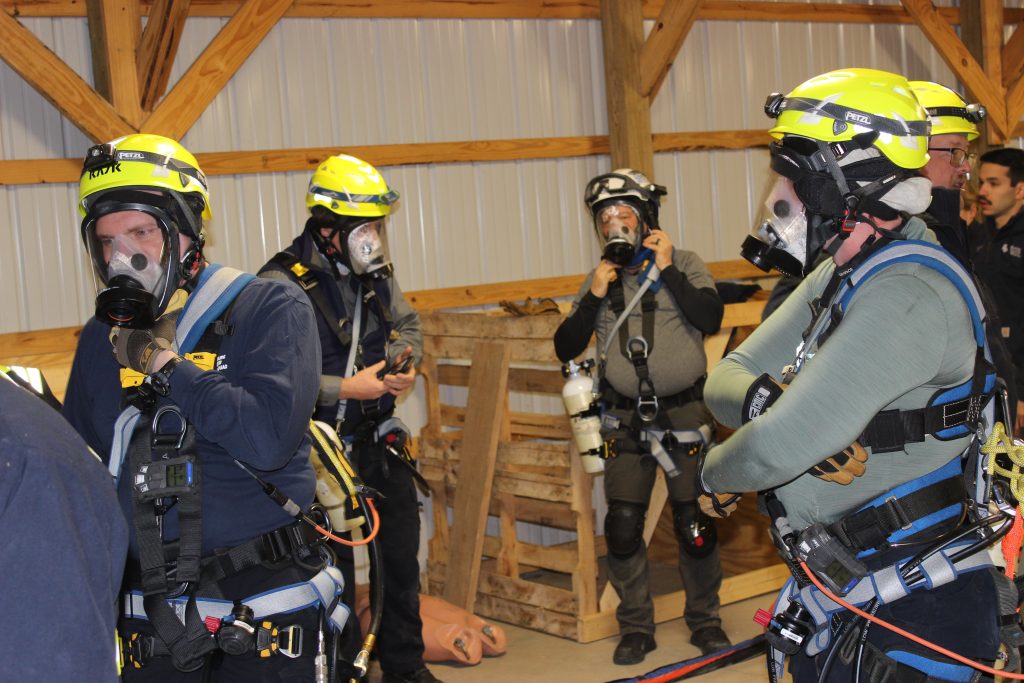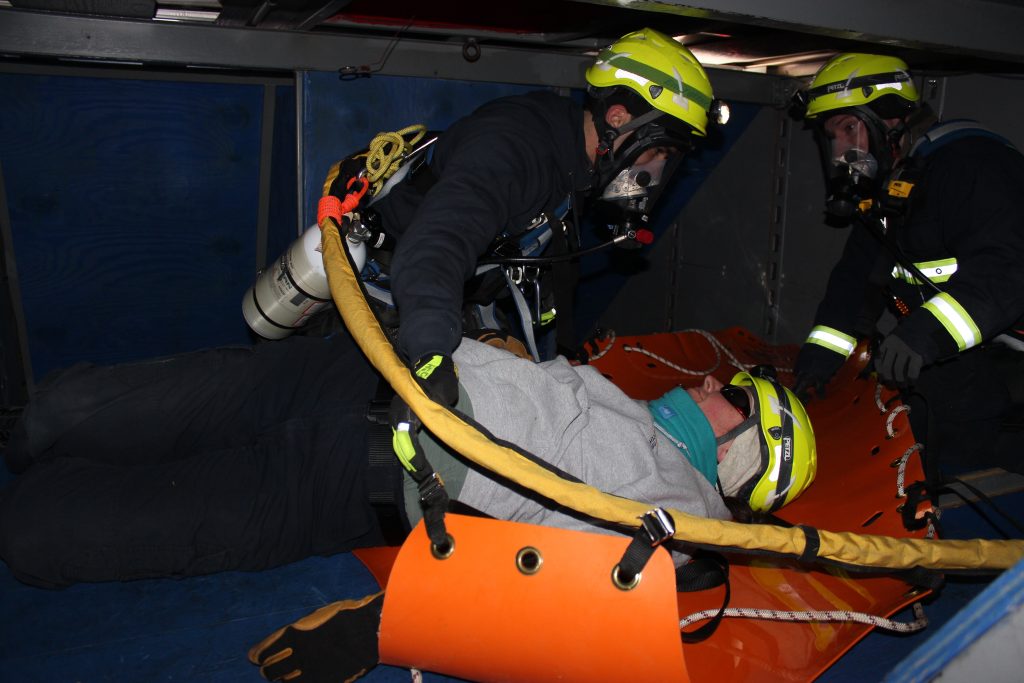

Lori Graham
Contributing Writer
The Blacksburg Volunteer Rescue Squad is a fully volunteer-supported organization, so when special situations come up that require technical expertise in saving a life or recovering a loved one, the Technical Team steps up.
Using skills from their full-time jobs or other areas of expertise, they aid in areas including heavy technical extrication, trench, structural collapse, and confined space or light technical water, rescue, cave rescue, rope rescue, and search and rescue, according to www.blacksburgrescue.org.
The Technical Rescue Division formed through the consolidation of the SAR (Search and Rescue) team, Cave Rescue Team, and the BVRS Heavy Technical Rescue team under a single structure. The SAR team, formerly known as the Southwest Virginia Mountain Rescue Group (SWVaMRG), was formed in 1985, joined BVRS in 2006, and specializes in locating missing persons and extricating them from remote areas. The Cave Rescue Team, formerly known as the Blacksburg Cave Rescue Group (BCRG), was formed by a group of VPI Cave Club members specially trained in rescue and joined BVRS in 2015. By these teams being under a single structure they’re able to benefit from additional funding, a unified administrative team, and strong training programs that often overlap between disciplines.
“Our cave team is one of the best cave rescue teams in the nation, I believe,” Joshua Quesenberry, Heavy Technical Rescue Coordinator for the Technical Rescue Division, said.
Technical Rescue Team members train for situations in which an individual needs to be rescued from a confined space, but it is difficult to find this kind of specialized training. The Blacksburg Rescue Squad, including the Technical Rescue Team/Division, attend the Virginia Association Volunteer Rescue Squad, or VAVRS, Rescue College for training.
“Previously, the Rescue College was an avenue for confined space rescue training, but 10-15 years [ago] the class stopped being offered,” Quesenberry said.
This past spring, the Technical Rescue Team was able to pay for a 40-hour Confined Space Rescue Technician course, which 14 of their members completed. Additionally, they continue to train on their own.
“We will do an exercise, and I fully expect that the exercise will go in one direction, but sometimes it is something that it is not what we do in confined space rescue, but it is done in cave rescue, and it works for both,” Quesenberry said. “There must also be a unified agreement on the choice of rescue technique the squad will use for safety reasons. If I don’t feel safe to go in, I’m not going in.”
What is considered a confined space? Per OSHA, the Occupational Safety and Health Administration, a space large enough that an employee can enter with their body and perform a task is a confined space. You may have one way to get in and that is the same way to get out. Thirdly, it is not intended for long-term occupancy. Some examples of a confined space are a crawl space in a house, an attic, manholes, grain silos, technically trenches are confined spaces, as well as vats.
In this region of southwest Virginia, Roanoke city, Roanoke County, and Salem have a combined technical rescue team, but none exist in Montgomery County.
“So, we kind of fill that void,” said Quesenberry. We respond statewide for missing persons too. If a surrounding state wants to request us, they can. We like serving anywhere that we can get to, not just locally.”
However, the technical rescue team must follow the protocol of a (MOU) Memorandum of Understanding, which takes care of all the legalities for them to enter a different locality. They do not and cannot self-respond but must be requested to aid in rescue.
Recently, the Blacksburg Rescue Squad has increased to approximately 150 members. Less than half of the squad does Technical Rescue, with confined space rescue groups consisting of a much smaller number.
“Our goal is in the coming months and years to get a better understanding of what kind of confined spaces are in the area,” Quesenberry said. At the end of the day, our area is Blacksburg, and then we branch out from there. Virginia Tech is technically the responsibility of their rescue squad, but I am working with them to explore our plans in case something happens there. There is a lot we don’t know about that is right in our backyard.”
A Confined Space Rescue Pre-plan is a very important survey that is conducted, prior to entering a confined space, and helps rescue teams in an unfortunate situation that a rescue is needed. A pre-plan survey is also a part of training that each technical rescue member must be able to complete. The plan should involve things like knowing the expert authorities at the location that know about the confined space. These individuals can provide necessary and quick information to the technical team in determining the safest pathway to take. Other information such as dangerous chemicals in the location or machines that could injure a rescue member can help as well.
Quesenberry and his team are doing several things to work with the community to provide better plans for businesses that may have confined spaces in their environments.
“Currently, we are in conversations with the 9-1-1 Center to make the response time more streamlined,” he said. “A confined space mock rescue with Virginia Tech is in the works with a date yet to be determined; possibly happening in the spring. The Technical Rescue Team tends to train once a week on average, with heavy technical team training once a month focusing on confined space and vehicle extrication to be the exercises more recently.”
If a company is regularly performing risky or potentially dangerous tasks, they should train and maintain their own standby rescue team, utilizing those individuals that are trained and authorized to enter their confined spaces.
“Assisted rescue is always the first thing we want people to try to do,” Quesenberry said. “If the ambulance shows up, they can’t go in until someone with higher training arrives, but if someone that works in the space regularly can safely get the person out, preferably through non-entry rescue, then it is a much better situation.”
If you have questions about creating your own confined space pre-plan, or other questions about the Blacksburg Rescue Squad in general, please reach out to them at their website at www.blacksburgrescue.org.


